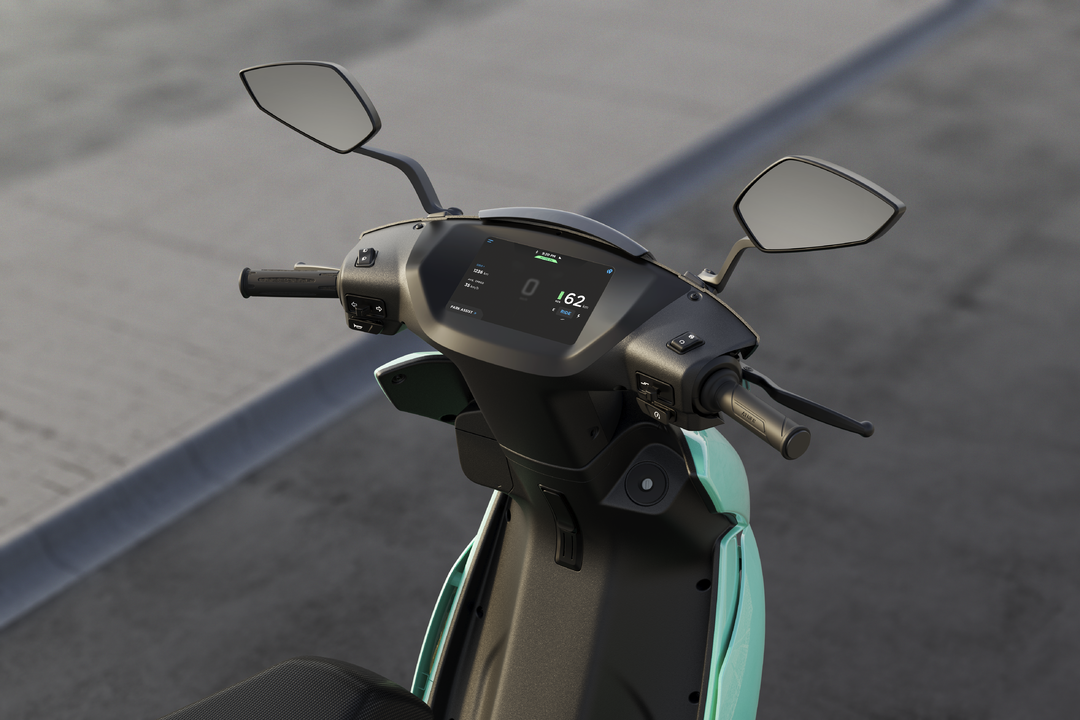
Software @ Ather
I have often been asked about the role that software plays at Ather. When we talk about a connected vehicle, the most that people can imagine is a telemetry data logging system. However, this notion doesn’t even begin to scratch the surface of what goes into our software stack.
As any consumer internet company, we use regular web technologies, big data and mobile app frameworks. Ather’s unique challenge lies in applying these well-known frameworks to the brand new context of Electric Vehicles (EVs). The ecosystem we work in, is still evolving, and there is limited availability of open source or third-party supported libraries and tooling. Imagine actually getting to write the b-tree algorithms (an interview-favourite question) that jobs seldom require.
To start with aspects of our software system, we have a dashboard on our vehicles built on Android OpenSource Platform. Google is yet to certify 2-wheeler dashboards, due to which we use AOSP instead of Android Auto. This restricts the availability of a lot of services, libraries and tools that are readily available for certified devices. But, we developed custom libraries for our use cases, as we were one of the earliest to implement these technologies in a smart 2-wheeler context.
Our dashboard platform acts as a hardware abstraction layer, and also performs supervisory control of the different ECUs (Electronic Control Units), Peripherals (headlights, indicators, etc), and subsystems including battery and motor. It is the brain of the vehicle.
The dashboard includes an HMI (human-machine interface) layer, which is equivalent to an android mobile application applied in the context of a smart 2-wheeler. Further, every application that sits on the dashboard, needs the code to be optimized for high performance and low footprint.
Our vehicles also interact with the Ather mobile app. The app continuously syncs with the vehicle through the 4G network and connects with several backend systems for enabling functions such as payments, service booking, trip reports, displaying information such as - predicted range, navigation, locating charging points, and more. Here, the erratic connectivity presents all sorts of problems which goes as a design input for us to handle these failure modes.
The dashboard sends data at a very high throughput to our backend systems. Our backend has an event-driven architecture designed to: 1. ingest high throughput data from the bikes, 2. ensure time ordering of the events, 3. enrich the data in real time as well as in batch, and 4. send the transformed data for further applications. Sound familiar? I probably described every single consumer internet company’s core data system. Our challenge is in the EV domain and the data volume and variety that we have to handle. More on this in our second article.
Further, we have to think of at least a 7-10 year horizon for any design choice we make, which is the expected lifetime of a vehicle. The design also needs to handle all model variants and generations of vehicles which are themselves evolving rapidly.
Our Data Science team is tasked with tackling the problem statements of the smart 2-wheeler mobility domain. Contrary to popular opinion, our problems go far beyond predictive diagnostics. We have both low-latency and medium-latency use cases, which is why we have come up with an edge-AI framework for rapid deployment of algorithms. We will talk about the edge AI framework more in a follow-on article.
The data science team has built fundamental algorithms that models not just a physical bike bike, but also ride and charge behavior. These algorithms enable low-latency use cases like auto-indicator turn-off, theft/tow detection, fall detection, load detection, pothole detection and a lot more. They are also key to enable us to personalize the experience of the ride for our customers. In short, we are building fundamental models to eventually build an ADAS (advanced driver assist system) for 2-wheelers.
So, stay tuned to learn more about software @ Ather, through this series.
If you are excited about what we do and want to join us, please visit our careers page here: https://www.atherenergy.com/careers
Senior Machine Learning @Nunam | MLOps, Time-series forecasting, Computer Vision, Edge AI
2yRegular ml deployment in the cloud is cumbersome enough, deployment in edge devices would be a bigger challenge since there are few frameworks and benchmarks available for ai/ml at the edge. Looking forward to the next article.
Captain @ Squareboat | TEDx Speaker | Instantly onboard web/mobile developers and UI/UX designers from us!
2yExcited to know about this 🙂
Executive Engineer - Sales & Services
2yWant to learn more
#ather #indian #tesla 🤝
Digital Consulting - Mckinsey and Company
2yGood one! I have many questions already (purely out of curiosity) Would you prefer having an application built into IVI system itself (can also have mic 🎤), rather than leveraging android Auto ? Customizing Android Auto for 2 wheelers, due to lack of Android Automobile OS for 2 wheeler, pays off well, is it ? I mean that kind of investment is daunting! Also when Google launches their version of Android Auto OS for 2 wheelers, what happens to custom applications developed by 2 wheelers in their legacy models? Do you see future trend in 2 wheelers heading in the direction where you may have SIM or eSIM embedded in IVI ? Looking forward to furthermore such articles ! :)